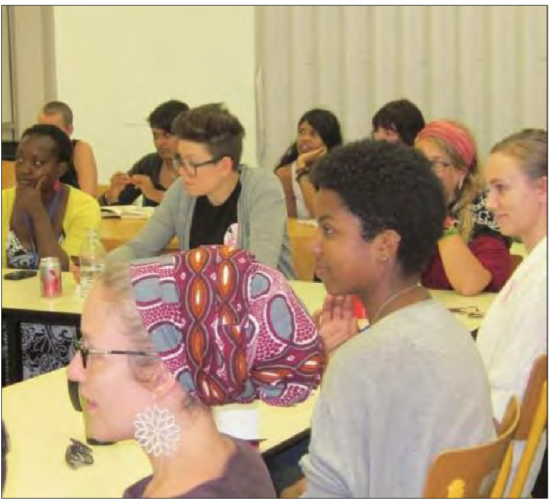Members of different cultural groups have varying preferences for different organizational patterns such as linear and holistic.
linear pattern
Speakers from low-context cultures often use linear patterns, such as cause- and-effect, problem-solution, chronological and spatial. In these patterns the speaker develops the main idea step by step, relying on facts and data to support the main argument. The main points and sub-points are connected via transitions, internal previews and summaries. The speaker relies more on facts and data, rather than on stories and emotional appeals, and contextual understanding is not emphasized. However, other speakers, mostly from high-context cultures, use holistic and configural organizational patterns that are more indirect than the linear patterns (Lieberman, 1994).
We have no hope of solving our problems without harnessing the diversity, the energy, and the creativity of all our people. ~ Roger Wilkins

holistic pattern
In holistic patterns, instead of directly and explicitly presenting key ideas, the speaker uses examples and stories to convey the main idea and leaves it to the audience to interpret the message encoded in the examples and stories told. The main points and sub- points are connected through implication rather than by clear bridges and transitions. Cheryl Jorgensen Earp (1993; as cited in Jaffe, 2004) has identified three distinct types of holistic organizational patterns: wave, spiral and star.
wave pattern
In the wave pattern, speakers adopt a crest-trough wave pattern in which they use examples and stories to slowly build up to the main point at the crest of the wave. The speaker then winds down and repeats the pattern, reiterating main points or introducing new points at the peaks. Speeches that follow the wave pattern usually end dramatically, at the crest. Ceremonial speakers often employ this pattern, using repetitive phrases to build up to the crest.
spiral pattern
A speaker employing the spiral pattern builds up dramatic intensity by moving from smaller and less-intense scenarios to bigger and more-intense scenarios, in an upward spiral. A speech about disciplining a child might use a spiral pattern. First, the speaker could say that for a small transgression a child might be given a time-out. The next scenario could describe a larger transgression and a bigger punishment such as being grounded for a day. Subsequent scenarios could build further in intensity.
star pattern
A variation of the more linear topical pattern, the star pattern presents a set of main points connected by an underlying common theme. For different audiences, speakers will start with different main points, but all main points will be united by one theme. For instance, while delivering a speech on “save the dolphins” to primary school students, the speaker might start with a main point that appeals to children, such as the “born to be free” argument, and then cover the other main points. However, when addressing marine biologists, the speaker might start with the main point that keeping dolphins in captivity is harmful to their health. Then the speaker would cover the remaining points, all tied to the theme of saving dolphins.
All patterns, whether linear or holistic, require careful and skillful planning and organization. When addressing a diverse audience, public speakers should make an effort to adjust their organizational patterns to reflect their audiences’ preference.





